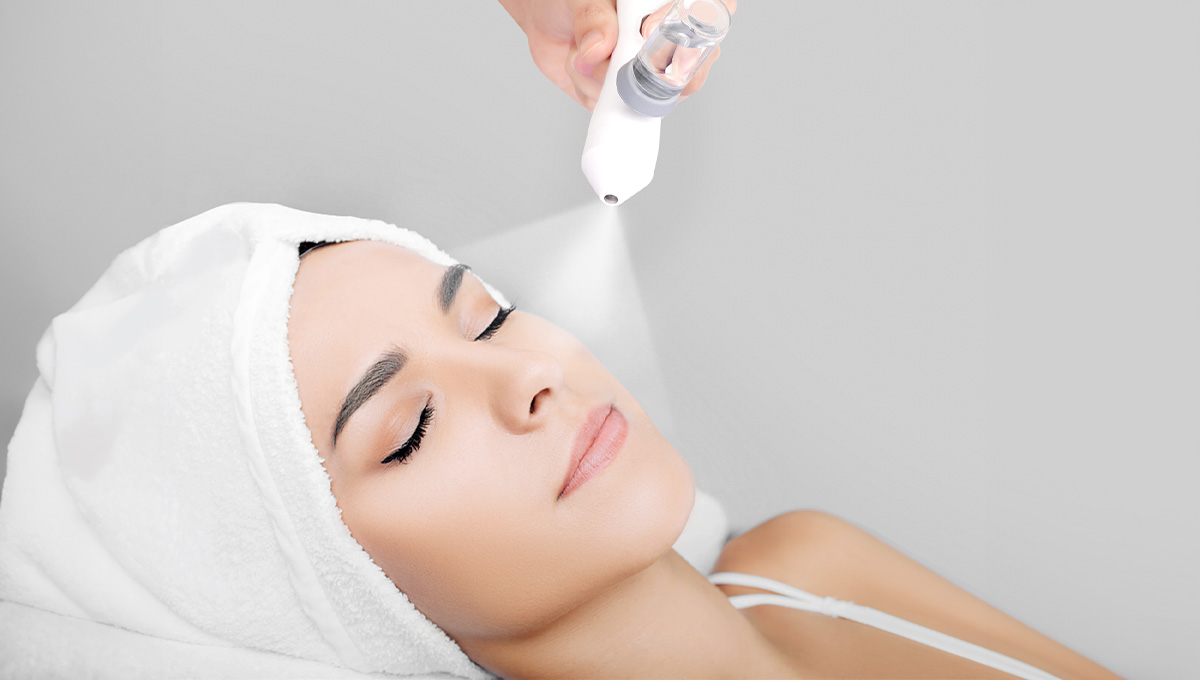
Dark circles are one of the most common issues we face. Depending on your skin’s typical tone, this area could appear blue, purple, brown, or black in certain places. You may appear worn out or older than you are if you have dark bags under your eyes.
There might be numerous causes of dark under eyes. However, they typically do not indicate a health issue. Most of the time, dark circles beneath your eyes don’t warrant concern. However, you might like to make your under-eye circles less noticeable for cosmetic purposes. Read on to know how!
The Story of Dark Circles
There are several reasons why dark circles are caused. A bluish tinge is produced by blood vessels closer to the skin’s surface, becoming more noticeable. Skin color pigment and melanin can build up and darken the area even more. Skin thins with age, highlighting pigmentation and blood vessels.
Furthermore, the loss of collagen and fat around the eyes amplifies shadows, making dark circles more noticeable. Thus, age-related modifications to skin texture and order, together with increased melanin and blood vessel visibility, all contribute to the development and prominence of dark bags under the eyes.
Common Causes of Dark Circles
There are numerous reasons for what causes dark circles beneath your eyes. Aging is one of the most frequent causes of dark circles. The skin beneath your eyes thins and loosens with age, making the blood vessels beneath your skin more noticeable. This may make your under-eye area appear darker.
Other potential causes of dark circles beneath your eyes could be:
● Genetics: Research has indicated that there may be a family history of dark circles under the eyes.
● Dermatitis: The blood vessels beneath your eyes may widen and become visible through your skin due to eczema or contact dermatitis.
● Rubbing your Eyes: Rubbing and itching your eyes can lead to blood vessel breakage and swelling of the under-eye area.
● Lack of Sleep: Pale skin beneath your eyes results from bad sleeping habits. Your skin readily reveals your blood vessels.
● Hyperpigmentation: Excessive sun exposure causes your body to produce more melanin. The pigment, or melanin, gives the skin its c+olor.
● Dehydration: If you don’t drink enough water, the skin behind your eyes may appear lifeless.
● Lifestyle Factors: You may also get dark circles beneath your eyes from smoking, heavy alcohol consumption, and stress.
Complex Causes and Treatments
When using home remedies to alleviate dark circles around the eyes, you should consult a dermatologist or doctor for advice on appropriate medical treatment which may include some of the choices listed below.
● Creams for the Skin: Creams that bleach may be able to lessen hyperpigmentation. These could consist of hydroquinone, tretinoin, or a mix. Hydroquinone usage may need to be continued for at least three months to show results.
● Kojic Acid: Anecdotal evidence indicates that kojic acid is useful in treating dark circles. Two types of fungi produce the natural substance kojic acid. Nevertheless, contact dermatitis, skin redness, and adverse effects of kojic acid are possible.
● Acid Azelaic: Azelaic acid is a safe medication that can be used for extended periods to treat discoloration under the eyes.
Applying Vitamin C Topically: An earlier, brief 2009 study examined the benefits of a 10% vitamin C lotion for treating dark circles for six months. The lotion effectively lightened the darkness beneath the eyes.
● Chemical Peels: Dermatologists use alpha hydroxy acids, including glycolic acid, in chemical peels to help lighten hyperpigmentation beneath the eyes. For best results, you can also combine chemical peels with topical lotions.
● Lasers: Laser therapy effectively treats dark circles. Less intrusive laser techniques like diode or pulsed dye lasers may reduce scarring and other possible side effects.
● Fillers: Dermal fillers could be possible if dark circles around the eyes are caused by loss of the skin or the absence of fatty tissue. Hyaluronic acid gel or platelet-rich plasma injections can be given to patients for the area under the eye.
● Operation: Doctors can get rid of dark circles caused by fat deposits or excess skin around the eyes using a procedure known as blepharoplasty or eye lifting devices.
Any potential side effects should always be discussed because the area under the eyes is so sensitive. They also have to ensure that a trained dermatologist only performs any medical operations related to this area.
Home Remedies and Lifestyle Changes
Simple home remedies may help people’s dark circles beneath their eyes appear less noticeable. Many of these affordable cures have no negative side effects, so even though some scientists have not validated them, they might be worth trying.
● More Sleep: You can lessen or avoid dark circles by ensuring adequate restful sleep each night. Stacking extra pillows on top of the head may assist in minimizing puffiness and dark circles around the eyes.
● Cucumber: An earlier 2013 study found that applying cucumber slices to the eyes may help relieve tired eyes and minimize swelling. Cucumbers’ high water and vitamin C content may aid in hydrating and nourishing the skin. Cucumbers also have silica, which is necessary for healthy tissue.
● Tea Bags: Tea bags can potentially reduce puffiness and dark circles beneath the eyes. Caffeine increases blood flow and possesses antioxidant qualities. You can boil two tea bags in water, cool them, and place one on each eye. Boiling tea bags in the refrigerator beforehand could help to cool the eyes. It is possible to utilize herbal, green, or black tea bags.
● Facelifts: Dark circles under the eyes may form as a result of poor circulation. You can enhance circulation by including a little eye massage in a facial. One can also try using a cold compress to lessen the look of dark circles under the eyes.
● Antioxidants: Antioxidant-containing face creams and under-the-eye cosmetics may assist in lessening the visibility of dark circles. Antioxidants like vitamins C and E may aid in treating dark circles.
● Cosmetics: While makeup cannot eliminate dark circles, some people apply under-the-eye makeup for aesthetic reasons.
Conclusion
Reasons for getting dark circle can be many. Age, genetics, and lifestyle choices all contribute to forming dark circles. Dietary deficiencies, allergies, or underlying medical conditions may also bring dark circles on.
Dark circles may be treated with home treatments. Getting enough sleep, managing stress, and drinking enough water may help avoid dark circles. For treatment options and to rule out any underlying medical disorders, you should consult their doctor or dermatologist if they are concerned about developing dark circles.
FAQs
1. Are dark circles the symptom of any disease?
Dark circles beneath the eyes don’t usually indicate a health issue. Speak with a medical expert if you observe changes under one eye that worsen over time. You can experiment with makeup and natural therapies for better-looking under-eye areas.
2. Is dark circle the reason for any deficiency?
Dark circles are a result of vitamin deficits, specifically in vitamins E, D, K, A, and B12. One of the main causes of dark circles is an iron shortage.
3. Can dark circles be permanently removed?
Many people utilize various techniques, both over-the-counter and prescribed by doctors, to eliminate or reduce the appearance of dark circles beneath their eyes. Even though none of these treatments are long-lasting, regular use and upkeep will help minimize the visibility of dark circles.
4. How do lifestyle changes impact dark circles?
Age-related facial alterations and abrupt or severe weight loss are also possible. Poor eating habits, sleep deprivation, and long-term or excessive alcohol or tobacco use are examples of lifestyle problems that may also be important. Options for treatment are based on the particular cause.
5. Are there any risks associated with treatments for dark circles?
Anecdotal evidence indicates that kojic acid is useful in treating dark circles. Two types of fungi produce the natural substance kojic acid. People should be aware. Nevertheless, contact dermatitis and skin redness are possible with adverse effects of kojic acid.


